Prediction of acute myeloid leukaemia risk in healthy individuals
- PMID: 29988082
- PMCID: PMC6485381
- DOI: 10.1038/s41586-018-0317-6
Prediction of acute myeloid leukaemia risk in healthy individuals
Abstract
The incidence of acute myeloid leukaemia (AML) increases with age and mortality exceeds 90% when diagnosed after age 65. Most cases arise without any detectable early symptoms and patients usually present with the acute complications of bone marrow failure1. The onset of such de novo AML cases is typically preceded by the accumulation of somatic mutations in preleukaemic haematopoietic stem and progenitor cells (HSPCs) that undergo clonal expansion2,3. However, recurrent AML mutations also accumulate in HSPCs during ageing of healthy individuals who do not develop AML, a phenomenon referred to as age-related clonal haematopoiesis (ARCH)4-8. Here we use deep sequencing to analyse genes that are recurrently mutated in AML to distinguish between individuals who have a high risk of developing AML and those with benign ARCH. We analysed peripheral blood cells from 95 individuals that were obtained on average 6.3 years before AML diagnosis (pre-AML group), together with 414 unselected age- and gender-matched individuals (control group). Pre-AML cases were distinct from controls and had more mutations per sample, higher variant allele frequencies, indicating greater clonal expansion, and showed enrichment of mutations in specific genes. Genetic parameters were used to derive a model that accurately predicted AML-free survival; this model was validated in an independent cohort of 29 pre-AML cases and 262 controls. Because AML is rare, we also developed an AML predictive model using a large electronic health record database that identified individuals at greater risk. Collectively our findings provide proof-of-concept that it is possible to discriminate ARCH from pre-AML many years before malignant transformation. This could in future enable earlier detection and monitoring, and may help to inform intervention.
Conflict of interest statement
The authors declare no competing financial interests.
Figures

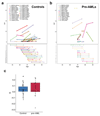
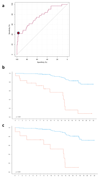
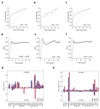


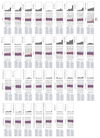
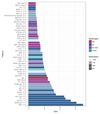
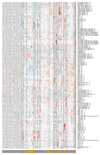

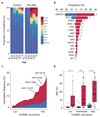


Comment in
-
Predicting progression to AML.Nat Med. 2018 Jul;24(7):904-906. doi: 10.1038/s41591-018-0114-7. Nat Med. 2018. PMID: 29988142 No abstract available.
-
Roots of AML Detectable Long before Symptoms.Cancer Discov. 2018 Sep;8(9):1056. doi: 10.1158/2159-8290.CD-NB2018-099. Epub 2018 Jul 23. Cancer Discov. 2018. PMID: 30037845
-
Early prediction of AML risk.Nat Rev Clin Oncol. 2018 Oct;15(10):590. doi: 10.1038/s41571-018-0078-z. Nat Rev Clin Oncol. 2018. PMID: 30050093 No abstract available.
-
How to predict the future.Nat Rev Genet. 2018 Sep;19(9):531. doi: 10.1038/s41576-018-0041-y. Nat Rev Genet. 2018. PMID: 30054567 No abstract available.
-
AML: Predicting the Unpredictable.Cell Stem Cell. 2018 Aug 2;23(2):162-163. doi: 10.1016/j.stem.2018.07.005. Cell Stem Cell. 2018. PMID: 30075128
References
Publication types
MeSH terms
Grants and funding
- 16491/CRUK_/Cancer Research UK/United Kingdom
- 21777/CRUK_/Cancer Research UK/United Kingdom
- MR/N003284/1/MRC_/Medical Research Council/United Kingdom
- G1000143/MRC_/Medical Research Council/United Kingdom
- MC_UU_12015/1/MRC_/Medical Research Council/United Kingdom
- P30 CA008748/CA/NCI NIH HHS/United States
- 14136/CRUK_/Cancer Research UK/United Kingdom
- G0401527/MRC_/Medical Research Council/United Kingdom
- 23015/CRUK_/Cancer Research UK/United Kingdom
- WT_/Wellcome Trust/United Kingdom
- MC_PC_12009/MRC_/Medical Research Council/United Kingdom
- 001/WHO_/World Health Organization/International
LinkOut - more resources
Full Text Sources
Other Literature Sources
Medical

